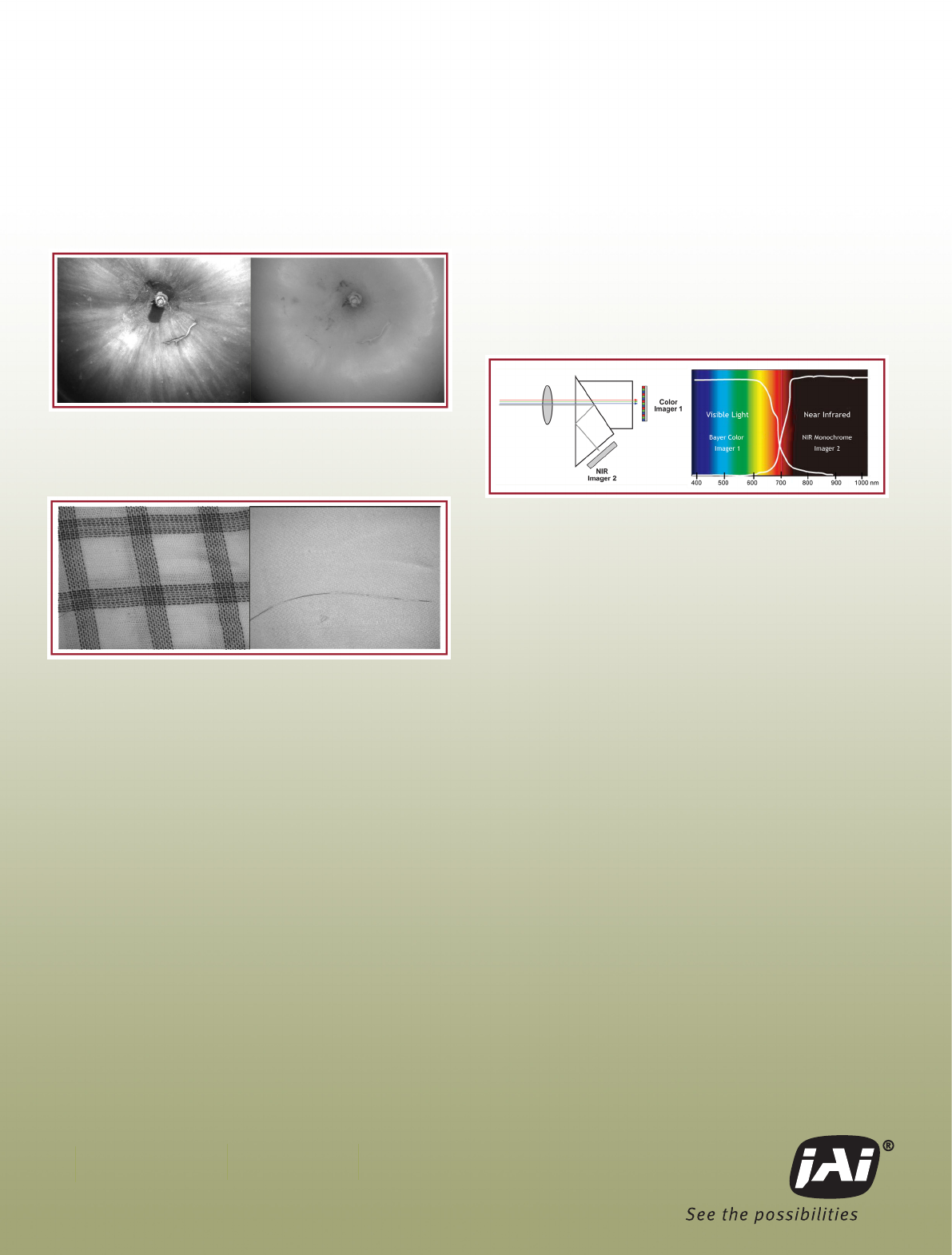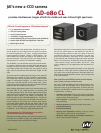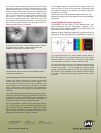
Visit our web site on www.jai.com
Company and product names mentioned in this datasheet are trademarks or registered trademarks of their respective owners.
JAI A·S cannot be held responsible for any technical or typographical errors and reserves the right to make changes to products and documentation without prior notification.
Europe, Middle East & Africa
Phone +45 4457 8888
Fax +45 4491 3252
Asia Pacic
Phone +81 45 440 0154
Fax +81 45 433 6930
Americas
Phone (Toll-Free) 1 800 445 5444
Phone +1 408 383 0300
The camera’s spectral separation provides critical image
information across a wide range of inspection tasks. In food
inspection applications, for instance, the visible spectrum
channel captures clear images of the surface properties and
checks for ripeness, while the NIR channel checks for early
signs of decay, mechanical bruising and pest damage below
the surface. If a fruit is the right color, most of the light
from the NIR signal bounces back. When one area of the
fruit absorbs more light than the others, it’s likely that the
area’s cell structure is different from the rest of the fruit –
indicating internal decay or damage.
In many cases, human eyes cannot distinguish between defects
and natural color variation. The NIR channel allows the
AD-080CL to easily pick out imperfect items.
The NIR channel detects hard-to-see aws hidden in fabrics –
in this case, a human hair.
The technology behind JAI’s multi-spectral breakthrough
Though many camera manufacturers produce prism-based
cameras, the ability to customize the prism optics to cre-
ate a robust 2-CCD solution has proved a challenge. JAI’s
unique research and development capabilities, combined
with its multi-prism camera expertise, have enabled the
company to be the rst to bring the much-needed solution
to market.
JAI has developed unique manufacturing equipment that en-
ables high-precision bonding of image sensors onto the prism
assembly. This makes the AD-080CL more cost-efcient to
produce than other solutions on the market – and allows JAI
to offer the camera at a more competitive price.
The 2-CCD AD-080CL is based on the technology found in
JAI’s 3-CCD solutions – but is specically designed to man-
age visible and NIR light information. These two spectral
bands are fully separated in the prism by diachronic coat-
ings, so they do not affect one another. The result is true
multi-spectral information from each channel.
The AD-080CL aligns the visible and NIR images within one
fourth of a pixel (a level of precision that’s not possible with
two separate cameras) and maintains this stable alignment
throughout its lifetime.
These spectral curves show the lters’ spectral behavior. The
diachronic coatings on the prism separate the color and NIR light
information.
Greater exibility for broader applications
The AD-080CL, the rst camera in JAI’s AD-080 series, inte-
grates seamlessly with the CameraLink™ interface. JAI is
planning to release models compatible with GigE Vision™ and
other interfaces in the near future.
Designed to bring inspection capability to previously inacces-
sible places on the processing line, the AD-080 CL features a
1/3” prism that allows for a small camera housing design of
55H x 55W x 80L mm. For the best imaging results, the camera
features standard C-mount lenses, which give a higher degree
of lens exibility and further reduce production costs.
The choice between continuous and triggered operation means
the camera can either produce a continuous stream of images
in free-running mode – or can be triggered to capture single
images. And separate exposure time for each channel allows
the channels to be adjusted to one another without changes
in the gain – maintaining a consistent signal-to-noise ratio at
all times.




